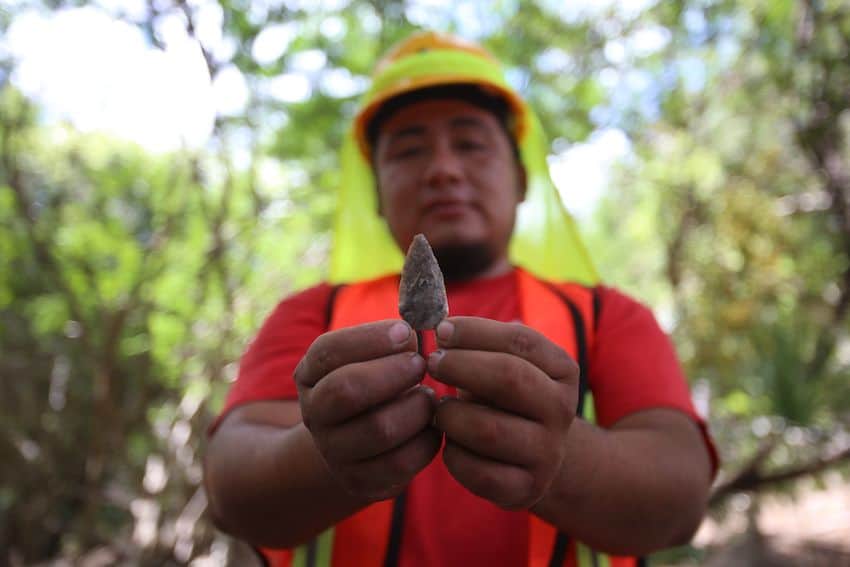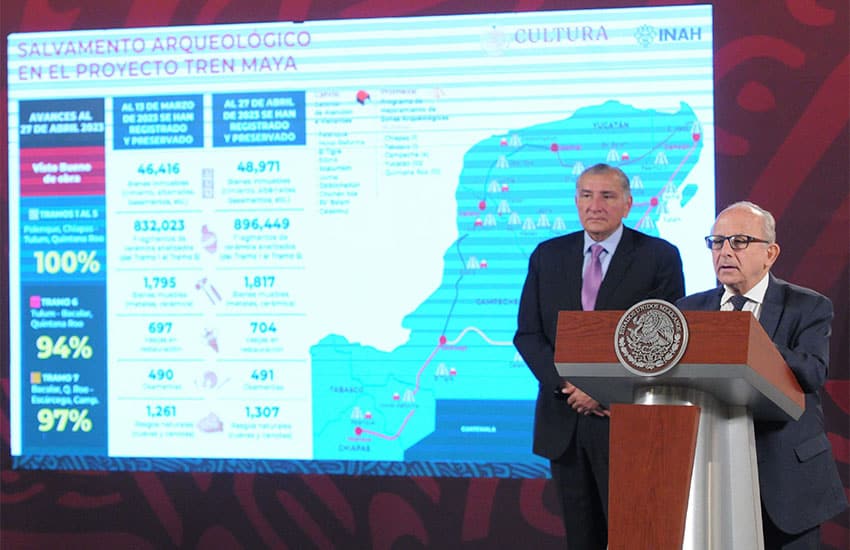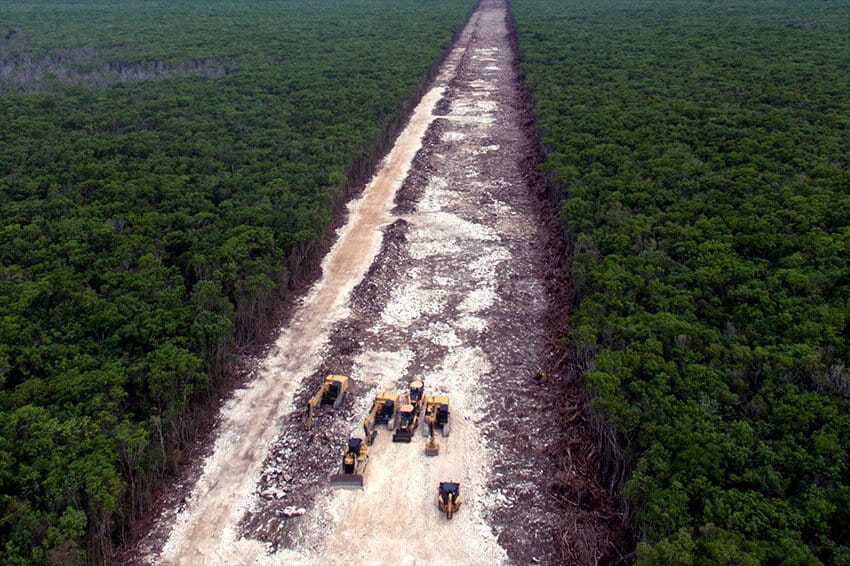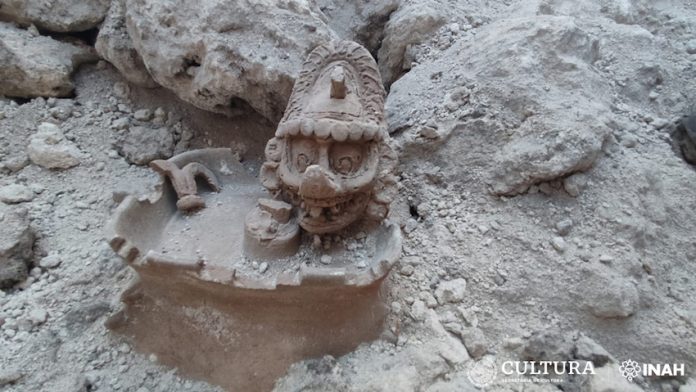Archaeologists performing rescue work on section 7 of the Maya Train route have found a rare stone sculpture of the Mayan god K’awil, a deity linked to power, abundance and prosperity.
The discovery was announced by Diego Prieto Hernández, general director of the National Institute of Anthropology and History (INAH), during President López Obrador’s morning press conference.

“This finding is very important because there are few sculptural representations of the god K’awil; so far, we only know three in Tikal, Guatemala, and this is one of the first to appear in Mexican territory,” Prieto said.
He explained that the deity is more commonly seen represented in paintings, reliefs and Mayan codices. This rare three-dimensional image was found on the head of an urn whose body shows the face of a different deity, possibly linked to the sun.
Prieto said AMLO had been shown the piece during a tour last weekend to inspect progress on section 7 of the Maya Train, which runs between Bacalar, Quintana Roo and Escárcega, Campeche.
He added that archaeological rescue work is now concentrated on sections 6 and 7 of the train’s route, as work is now completed on sections 1 to 5, between Palenque, Chiapas and Tulum.

“Work is still being done on complementary projects, such as the collection and cleaning of archaeological materials, their classification and ordering,” Prieto said.
“All this work should lead to analysis of the vast information, preparation of academic reports and a large international research symposium on the Mayan civilization, which will be organized for this year.”
As of April 27, the INAH has registered and preserved as part of the Maya Train archaeological rescue project:
- 48,971 ancient buildings or foundations
- 896,449 ceramic fragments
- 1,817 movable objects
- 491 human remains
- 1,307 natural features, such as caves and cenotes.

Other notable discoveries made during construction include a 1,000-year-old Maya canoe at the San Andrés archaeological site near Chichén Itzá, an 8,000-year-old human skeleton in a cenote near Tulum, and a previously unknown archaeological site of more than 300 buildings in Quintana Roo, dubbed Paamul II.
Prieto has previously said that a new museum will be constructed in Mérida that will be dedicated to discoveries unearthed during the construction of the Maya Train. The INAH is also analyzing the findings at its laboratory in Chetumal, which Prieto said would nourish the study of Mayan civilizations for the next 25 years.
However, while the archaeological rescue process is thought to be progressing well, the Maya Train continues to face strong resistance from environmentalists, who believe the project will do irreversible damage to the region’s unique ecosystems and subterranean lakes.
With reports from Aristegui Noticias
